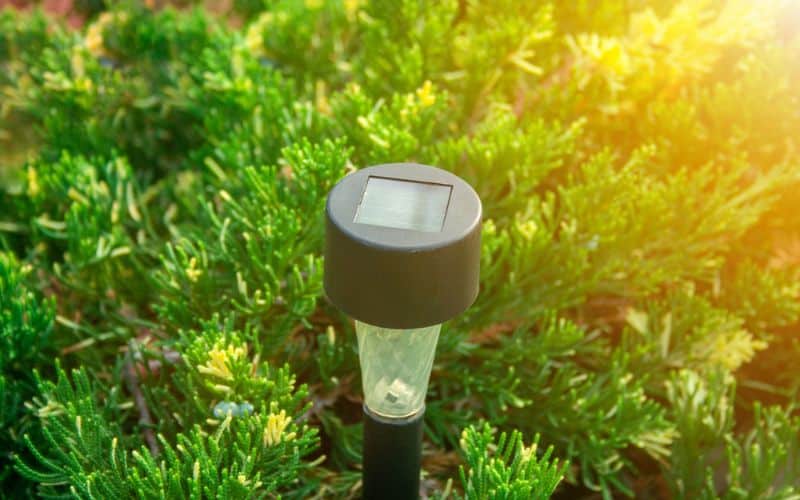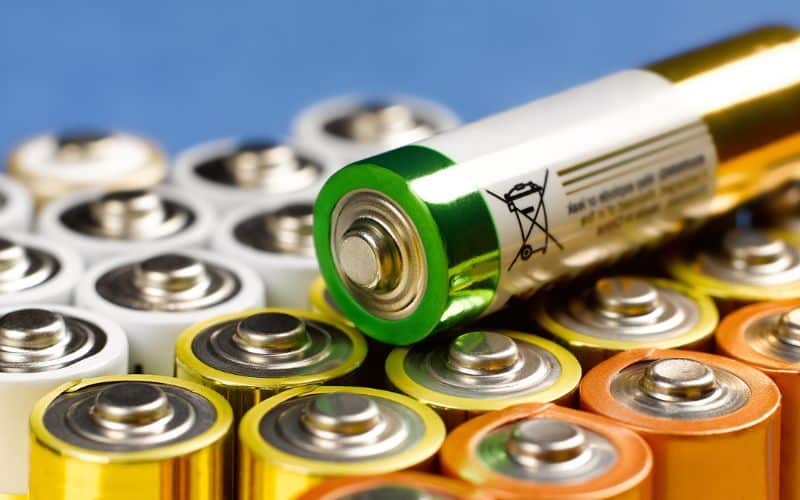
Choosing the right batteries for your solar garden lights is crucial for maintaining their glow and efficiency. You’ll want to ensure you’re selecting the correct size and type to keep your outdoor space illuminated without a hitch.
With options like AA and AAA sizes and a typical specification of 1.2 Volts at 600 mAh, it’s important to match your solar lights with compatible rechargeable cells. Opt for modern NiMH batteries over older NiCd types for longer-lasting power and a greener choice.
Benefits of Solar Garden Lights
Solar garden lights offer various advantages that span from cost savings to environmental impact. Here’s a breakdown of their key benefits:
- Environmentally Friendly: Unlike traditional lights, solar garden lights harness the sun’s renewable energy. This means they don’t rely on fossil fuels, reducing your carbon footprint.
- Cost-Effective: They offer significant savings on electricity bills. Given that they convert solar energy to power themselves, there’s no extra cost on your energy bill.
- Low Maintenance: Designed to withstand the elements, they require minimal maintenance. Most solar lights are designed to be ‘set and forget,’ with only the occasional cleaning needed.
- Easy Installation: You won’t need to worry about wiring or electrical sources. Simply place the lights where they’ll receive sunlight.
- Automatic Functionality: These lights are equipped with sensors that activate them at dusk and turn them off at dawn, providing hassle-free operation.
- Safety: As they don’t rely on mains power and have no wires, they are safer to install and pose less of a trip hazard in your garden.
- Aesthetic Appeal: They come in a range of styles that can enhance the visual appeal of your outdoor space and offer a welcoming atmosphere.
Factors to Consider When Choosing Batteries for Solar Garden Lights
Battery Type
When browsing for the right batteries for your solar garden lights, battery type is paramount. There are two primary rechargeable battery technologies: Nickel-Cadmium (NiCd) and Nickel-Metal Hydride (NiMH). NiCd batteries are durable and perform well in cold conditions but contain toxic chemicals. On the flip side, NiMH batteries are more eco-friendly, with a reduced toxicity level. They offer numerous advantages, such as a better performance profile and are less likely to suffer from memory effect compared to NiCd.
Battery Capacity
Battery capacity, measured in milliampere-hours (mAh), dictates how long your lights will glow after a charge. Solar garden lights typically use batteries ranging from 600mAh to 1300mAh. It’s crucial to match the mAh rating as closely as possible to your original battery to maintain optimal performance. Batteries with higher capacities may last longer but also have to fit within your lights’ design constraints.
Battery Lifespan
The lifespan of a battery is reflected by its charge cycles, which can vary largely between types. For instance, high-quality NiMH batteries can sustain up to 2100 charge cycles, equating to years of service life under normal conditions. In comparison, some batteries may offer a shorter usable life, averaging around 500 cycles. This aspect directly impacts long-term costs and the frequency of replacement.
Charging Time
Charging time is a key factor, especially if your garden area requires prolonged illumination. Batteries with quicker charging times ensure your lights are operational when needed, even after cloudy days that provide less solar energy. NiMH batteries typically have faster charge rates than NiCd counterparts, translating to less downtime and more reliable lighting for your outdoor space.
Environmental Considerations
Finally, taking into account environmental considerations, NiMH batteries stand out. They’re a responsible choice, as they contain no cadmium, which is a highly toxic metal found in NiCd batteries. With solar light usage already reducing carbon footprint, selecting NiMH batteries enhances your commitment to sustainability. Existing recycling programs further benefit the environment by properly disposing of spent batteries.

Popular Battery Options for Solar Garden Lights
Lithium-ion Batteries
Lithium-ion batteries are a prevalent choice for solar garden lights. These batteries are known for their long life span and consistent rechargeability, lasting between 500 to 800 charge-discharge cycles. Unlike some alternatives, they don’t require regular maintenance, which makes them a hassle-free option for outdoor installations. Lithium-ion’s compact size and affordability also simplify the integration into various solar light designs while maintaining optimal functionality.
Additionally, lithium-ion batteries have a superior energy density, meaning they can store more power relative to their size compared to other battery types. This makes them particularly suitable for areas where replacing batteries frequently isn’t practical. In terms of sustainability, they are a more eco-friendly option than lead-acid batteries, which is a vital consideration for environmentally conscious consumers.
Nickel-metal Hydride (NiMH) Batteries
The introduction of Nickel-metal Hydride (NiMH) batteries in the late ’60s marked a significant advancement in rechargeable battery technology. They present several benefits, including a very low self-discharge rate of less than 1% per month, which is ideal for solar lights that may not be used every day. With NiMH batteries, you’ll find an extended life cycle of up to 2,000 recharges, double that of their NiCd counterparts.
One of the substantial advantages of NiMH batteries is their less pronounced memory effect, meaning they don’t need to be entirely depleted before recharging to maintain their capacity. They are also more environmentally friendly, as they are recyclable and don’t contain the toxic materials found in some other battery types.
Nickel Cadmium (NiCd) Batteries
Nickel Cadmium (NiCd) batteries were once the go-to option for solar garden lights. They still offer notable benefits such as the ability to withstand extreme temperatures, making them adaptable to various climates. They come with a nominal voltage of 1.2 V and capacities ranging from 500 to 900 mA. Not only are they durable, with a life expectancy of one to two years, but they also boast a high cycle life of up to 1,000 charge and discharge cycles.
Despite these merits, it’s essential to note that NiCd batteries have a strong memory effect, which means their capacity could decrease if not fully discharged before recharging. Moreover, they require careful disposal due to the presence of cadmium, a harmful toxin. Nevertheless, for those needing budget-friendly, resilient batteries for their garden lights, NiCd can still be considered a competent option.
Lead Acid Batteries
Lead-acid batteries are one of the oldest types of rechargeable batteries still in use today, and their application in solar garden lights is well-documented. They offer robust performance and are particularly suited to larger solar lighting systems due to their ability to deliver high power levels. The affordability of lead-acid batteries makes them an attractive option, particularly for bulk installations or where cost constraints are a consideration.
However, these batteries have a relatively shorter cycle life and will need replacing more frequently than other types. They also require maintenance to ensure their longevity and optimal performance. Environmental concerns are also prominent with lead-acid batteries; they must be disposed of carefully to prevent lead contamination, a consideration that might steer you towards more eco-friendly battery options for your solar lights.

Best Practices for Battery Maintenance
Keeping your solar garden lights glowing all year round requires some attention, particularly when it comes to maintaining the batteries. Here’s how you can ensure your solar light batteries work efficiently and last longer.
Regular Cleaning
Dirt and debris can accumulate on your solar lights and panel, hindering their ability to charge properly.
- Ensure Optimal Charging: Regularly wipe the panel with a damp cloth to remove dirt.
- Maintain Light Quality: Clean the casing of the light to prevent dimming due to dirt buildup.
- Prevent Corrosion: Check the battery compartment for moisture or corrosion signs. If there’s any, clean it with a dry cloth.
Checking Battery Connections
Secure and clean connections are essential for reliable performance.
- Inspect Battery Terminals: Look for signs of corrosion or damage.
- Ensure Firm Connection: Press down on the batteries to check they’re properly seated.
- Check Wire Integrity: Look for broken wires or loose connections that could impede performance.
Storing Batteries During Winter Months
Cold temperatures can affect battery life and performance.
- Remove Batteries: If your lights will be unused for an extended period, remove the batteries.
- Store in a Cool, Dry Place: Keep the batteries at room temperature away from direct sunlight.
- Charge Before Storing: If possible, fully charge the batteries as this can help maintain their capacity.
Conclusion
Choosing the right batteries for your solar garden lights is crucial for optimal performance and longevity. By considering factors like battery type and capacity, you’ll ensure your lights shine brightly every night. Remember, eco-friendly options not only power your garden efficiently but also contribute to a healthier planet. Don’t forget to maintain your batteries with regular care and proper storage during off-seasons. With these tips in hand, you’re all set to enjoy an illuminated outdoor space that’s both beautiful and sustainably powered.
Colin Macmillan is a seasoned entrepreneur and the CEO of Riverwood Landscape, a leading landscaping company based in Canada. He has been at the helm of the company since leaving high school, demonstrating his strong leadership skills and business acumen.
Colin’s expertise lies in various aspects of landscaping, including lawn care, interlocking, sod installation, and commercial maintenance. His hands-on approach and dedication to the craft have been instrumental in building Riverwood Landscape into a reputable brand.
One of his most notable achievements is the creation of a successful landscape franchise that services multiple locations. This accomplishment underscores his strategic thinking and ability to scale operations effectively.
Colin has also had the privilege of working with Guelph Hospital for landscaping and maintenance, a testament to the trust and reliability that his company has earned over the years.
His professional mission is to offer the best services and experiences for customers, a goal that he tirelessly pursues. Colin’s commitment to excellence and customer satisfaction continues to drive the growth and success of Riverwood Landscape.









